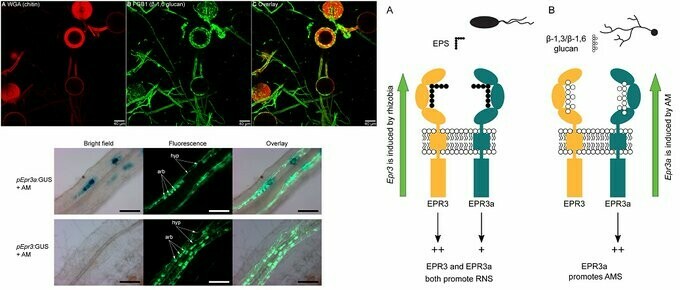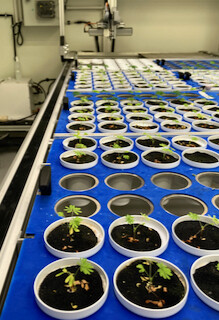PLOS Biology · @PLOSBiology
4923 followers · 1545 posts · Server fediscience.orgHow legumes detect microbes: a novel EPR3-type LysM receptor kinase recognizes fungal β-glucans & rhizobial exopolysaccharides, and regulates infection by arbuscular #mycorrhiza & #rhizobia, in the model #legume #Lotus japonicus #PLOSBiology https://plos.io/3MHEe2P
#plosbiology #lotus #Legume #Rhizobia #mycorrhiza
Justin Stewart · @thecrobe
524 followers · 212 posts · Server ecoevo.socialRT @g_levedis@twitter.com
A snapshot is worth a thousand words! #symbionts #nodules #rhizobia #arbuscules #amf #fungi #medicago #arborea
🐦🔗: https://twitter.com/g_levedis/status/1598451480973004805
#symbionts #nodules #Rhizobia #arbuscules #amf #fungi #medicago #arborea
Norbert Holstein · @dr_norb
742 followers · 556 posts · Server fediscience.org@trregeagle The life of the bacteria (called "#rhizobia" (="those who live in the root")) in the #RootNodules is really weird. They are totally isolated from oxygen because the nitrogen fixation only works in absence of oxygen. The plant feeds the rhizobia completely. It's like a golden cage. But as with the golden cage, there is a downside. After a while, the plant simply disassembles the root nodules and digests the bacteria. Although often considered as #symbiosis, it's actually #farming.
#farming #symbiosis #rootnodules #Rhizobia
Nemo Peeters · @nemopeeters
51 followers · 19 posts · Server fediscience.orgHi folks, some info about what keeps me busy in the lab. Here we are doing some automate #phenotyping using a linear #multispectral camera/image analysis to detect functional #mutualistic interaction between mimosa plants and different (and evolved) #rhizobia bacteria. When it "works" the plants get #nitrogen from the bacteria and the plant is greener and growth faster. Keep posted for more on this.
#nitrogen #Rhizobia #mutualistic #multispectral #phenotyping
Ellen L. Simms · @ELSimms
85 followers · 101 posts · Server ecoevo.socialI was trying to follow ecoevo folks from my @sfba account, but got overwhelmed and decided to add a verified account here so that I could peruse the Local timeline rather than following everyone.
We are currently studying #Bacteriophages of #Legume #Rhizobia Also, #Plant #Microbiome
#bacteriophages #Legume #Rhizobia #plant #microbiome


